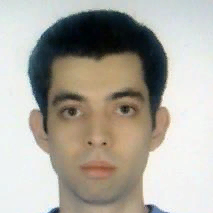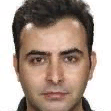International Journal of Image, Graphics and Signal Processing (IJIGSP)
IJIGSP Vol. 7, No. 7, 8 Jun. 2015
Cover page and Table of Contents: PDF (size: 1078KB)
Application-Oriented Farsi ALPD Using Deterministic Edge Clustering
Full Text (PDF, 1078KB), PP.1-8
Views: 0 Downloads: 0
Author(s)
Index Terms
License plate detection, license plate character segmentation, application oriented, edge clustering
Abstract
In this paper a new application-oriented method for automatic Farsi license plate detection (ALPD), based on morphology and a modified edge clustering algorithm is proposed. Access control (AC), law enforcement (LE), and road patrol (RP) are mainly three applications for ALPD. After image enhancement by preprocessing, the edge statistics analysis and the morphology filter are used to decrease the search regions and remove the unwanted edges. Then the expectation-maximization (E-M) algorithm is used to estimate the corresponding Gaussian components for edges of remained regions. In this way the results of edge clustering and Gaussian components estimation are deterministic whereas the processing time in comparison with similar approaches in literature, is decreased significantly. Candidate regions are obtained by applying application-oriented thresholds to the properties of estimated Gaussian components. Finally for each candidate region, the maximally stable extremal region (MSER) detector is used to detect character-like regions and then select the region(s) of interest containing license plates. The proposed method is evaluated by using a database which includes images for the three groups AC, LE and RP applications, whereas some images suffer of being low quality, low contrast and blur and some images have complex background through existing multiple license plates. The experimental results show that our proposed method is reliable for images of different quality and illumination condition and it is able to detect the rotated and skewed license plates even in images containing multiple license plates and complex backgrounds.
Cite This Paper
M. M. Zeinali, S. Ghofrani, A. Sengur,"Application-Oriented Farsi ALPD Using Deterministic Edge Clustering", IJIGSP, vol.7, no.7, pp.1-8, 2015. DOI: 10.5815/ijigsp.2015.07.01
Reference
[1]A.M. Al-Ghaili, S. Mashohor, A. Ramli, and A. Ismail, "Vertical edges-based car license plate detection method," IEEE Transactions on Vehicular Technology, vol.62, pp.26-38, 2013.
[2]H.J. Lee, S.Y. Chen, and W.S. Zheng, "Extraction and recognition of license plates of motorcycles and vehicles on highways," IEEE International Conference on Pattern Recognition, vol.4, pp.356-359, 2004.
[3]B. Hongliang, and L. Changping, "A hybrid license plate extraction method based on edge statistics and morphology," IEEE International Conference on Pattern Recognition, vol.2, pp.831-834, 2004.
[4]N. Ballas, S.M. Chai, M. Dwyer, and D. Linzmeier, "FPGA implementation of a license plate recognition SoC using automatically generated streaming accelerators," IEEE International Conference on Parallel and Distributed Processing Symposium, 2006.
[5]H.P. Wu, H.H. Chen, and R.J. Wu, "License plate extraction in low resolution video," IEEE International Conference on Pattern Recognition, vol.1, pp.824-827, 2006.
[6]Y.S. Soh, B.T. Chun, and H.S. Yoon, "Design of real time vehicle identification system," IEEE International Conference on Humans, Information and Technology, vol.3, pp.2147-2152, 1994.
[7]V.S.L. Nathan, J. Ramkumar, and S.K. Priya, "New approaches for license plate recognition system," IEEE International Conference on Intelligent Sensing and Information Processing, pp.149-152, 2004.
[8]V. Seetharaman, A. Sathyakhala, and N.L.S. Vidhya, "License plate recognition system using hybrid neural networks," IEEE International Conference on Fuzzy Information, vol.1, pp.363-366, 2004.
[9]R. Bermananth, A. Chitra, and V. Seetharaman, "A robust video based license plate recognition system," IEEE International Conference on Intelligent Sensing and Information Processing, pp.175-180, 2005.
[10]C.T. Hsieh, Y.S. Juan, and K.M. Hung, "Multiple license plate detection for complex background," IEEE International Conferenceon Advanced Information Networking and Applications, vol.2, pp.389-392, 2005.
[11]J. Matas, O. Chum, M. Urban, and T. Pajdla, "Robust wide-baseline stereo from maximally stable extremal regions," Image and Vision Computing, vol.22, no.10, pp.761-767, 2004.
[12]G.S. Hsu, J.C. Chen, and Y.Z. Chung, "Application-Oriented license plate recognition," IEEE Transactions on Vehicular Technology, vol.62, no.2, pp.552-561, 2013.
[13]M. Rasooli, S. Ghofrani, and E. Fatemizadeh, "Farsi license plate detection based on element analysis and characters recognition," International Journal of Signal Processing, Image Processing and Pattern Recognition, vol.4, no.1, 2011.


